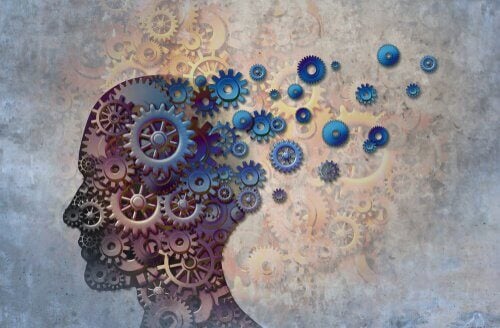The brain is home to our minds and memories, and we rely on their information processing capabilities when we start learning something new. But did you know that the brain combines memories to solve problems?
Human beings have the ability to creatively combine their memories to solve problems and acquire new knowledge, a process that depends, to a large extent, on the memory of specific events, these memories are known as episodic memory.
- Although episodic memory has been widely studied.
- Current theories do not easily explain how people manage to use their episodic memories to generate innovative ideas.
- New research has introduced a new way of understanding how the brain combines memories individually to solve problems.
The study, published in the journal Neuron, was conducted by a team of neuroscientists and artificial intelligence researchers from DeepMind, Otto von Guericke University in Magdeburg and the German Center for Neurodegenerative Diseases (DZNE).
Researchers offer the following example to explain how memory recovery is enabled: imagine you see a woman driving a car down a street; the next day, you see a man driving the same car on the same street; this last image can trigger memory. of the woman you saw the day before. So, you may think it’s a couple who live together because they use the same car.
Researchers propose a new brain mechanism that would allow the recovery of memories to activate the recovery of other related memories, this mechanism allows the recovery of several related memories, which then allow the brain to create new types of ideas like these.
Like classical episodic memory theories, the authors postulate that individual memories are stored as separate traces of memory in a region of the brain called the hippocampus.
According to Raphael Koster, DeepMind’s researcher and co-author of the study, episodic memories can tell us if we already knew someone or where we parked our car, for example: ”The hippocampus system supports this type of memory, which is critical to rapid learning,’ he explains.
Contrary to standard theories, the new theory explores an unattended anatomical connection that extends from the hippocampus to the nearby entorrinal cortex, but returns soon after. Researchers believe this recurring connection is what allows memories recovered from the hippocampus to trigger the recovery of others. related memories.
Researchers have developed a way to test this theory using high-resolution functional MAGNETIC resonance imaging. The study was conducted with 26 young men and women as they performed a task that required them to obtain information on separate events.
Volunteers received pairs of photographs: one of a face and one of an object or place; each individual object and location appeared in two separate pairs of photos, each associated with a different face, that is, each pair of photos was linked to another pair through the object or image of the shared place.
In a second phase of the experiment, the researchers tested whether participants were able to deduce the indirect connection between the two joined faces, which was done by showing a face and asking them to choose between two other faces. one, was associated with the same object or image of the place, and the other was not.
The researchers predicted that the face presented would trigger the memory recovery of the object or place with which it was paired and therefore cause brain activity that would move from the hippocampus to the entorrinal cortex. In addition, the researchers were also waiting to find evidence that this brain activity would later return to the hippocampus to trigger right-sided recovery.
Using specialized techniques developed by themselves, researchers were able to separate the parts of the entorrinal cortex that provide information to the hippocampus, allowing them to accurately measure activation patterns at the entrance and exit of the hippocampus separately.
Researchers programmed a computer algorithm to distinguish the activation of scenes and objects in these input and output regions. The algorithm was applied only when faces were displayed on the screen. If the algorithm indicated the presence of scene or object information in these tests, it could only be verified by memories retrieved from the linked scene or photos of objects.
According to the researchers’ explanation, these data showed that when the hippocampus regains a memory, activation does not pass to the rest of the brain, but returns to the hippocampus, a mechanism that would trigger the recovery of other related memories.
Researchers believe that the results of the algorithm are a synthesis of new and old theories. “The results can be considered the best of both worlds: it is the ability to remember preserved individual experiences, keeping them separate, while at the same time allowing to combine memories related to The time of recovery ?, said Dharshan Kumaran, co-author of the study.
According to Kumaran, this ability is useful, for example, to understand how different parts of a story fit together, which is not possible if only one memory is remembered.
The authors believe that the results of this study could help artificial intelligence learn faster in the future. Martin Chadwick, co-author of the study, explains that while there are many areas where artificial intelligence is superior, humans always have an advantage when tasks depend on flexible use of episodic memory. In this sense, Chadwick says: “If we can understand the mechanisms that allow people to do this, the hope is to be able to replicate them in our artificial intelligence systems, offering the ability to solve certain problems in much less time. “

